The interview of the CDS on India Today TV Channel on 2 July was illustrative of the reasons for the lack of progress in the establishment of Integrated Theatre Commands (ITCs). The general impression that had been created, through the media, before the interview, was that the IAF was not in favour of ITCs, and was playing spoilsport as it did not wish to part with its assets and control. However, the clarification offered by the Chief of Air Staff (CAS) in a follow up interview put paid to the misperceptions, if any.The CAS very emphatically stated that
IAF was not against the establishment of theater commands but had misgivings on the methodology. The aim of voicing reservations on the issue was to enable a constructive deliberation to get the process right and ensure synergistic application of combat power in the future. Answering a query, he also clarified that the IAF was certainly not restricted to playing only a supporting role, as was visualised and understood by the land forces.
It would be pertinent to examine why the theaterisation debate has stuttered and failed to secure a consensus among the services. More importantly why jointness has remained elusive. Broadly speaking there are concerns regarding the urgency and methodology that has been adopted towards the restructuring of the military commands. An elaboration would be in order.
As regards the IAF, the implementation of theaterisation was through a decree rather than through consultations and deliberations. The first misstep was the decision to establish an Integrated Air Defence Command (IADC). While in theory it made a great argument to integrate all the AD resources of the three services, the consequences were not thought through and were debilitating for the AF. It split the service down the middle functionally along defensive and offensive lines.
In this regard, the IADC was not recommended by the Kargil Review Committee, Group of Ministers (GoM), Naresh Chandra and Shekatkar Committees. Nor was it mooted by the IAF, being the domain specialist. It was a fanciful idea and ordered through a cavalier approach, the illogical persistence of which displayed poor operational grasp on air matters and arrogance of the newly acquired power. A direct casualty of this unilateral approach was the trust that existed between the services. Unfortunately, no study was undertaken to examine the various joint institutional mechanisms that were available for promoting jointness and why they had failed or were made to fail.
Lamentably, the trust between the services was further eroded, with the CDS opining in the interview that the AF was a supporting arm for the ground forces. Not only does it display an utter lack of knowledge on airpower aspects but slides the service back into the 1940s.
The United States Air Force in the 1940s existed as an auxiliary (supporting) arm of the US Army. During the course of World War II, the overbearing nature of the land forces, borne out of service primacies, and poor comprehension of the capabilities of airpower, resulted in the employment of airpower as per land power tenets (extended artillery and penny packets) and culminated in disastrous consequences; an example being the battle at Kasserine pass in North Africa.
The then Army aviators, who were part of the US Army Air Corps revolted against the land generals leading to the establishment of the US Air Force as an independent service with equal status. Ever since airpower has been employed as per its doctrine and tenets and its contribution as the lead arm of the military the world over needs no elaboration. The equality of the four service arms of the United States Armed Forces, in fact, has been enshrined in the US Constitution.
Needless to say, that the equality of status brings in moderation and balance and negates overzealous attempts towards service-centric approaches to war fighting. It also paves the way for the formulation of unified military strategies. The aspect of equality can be gauged from the fact that between 2008 and 2017, among the Unified Combatant Commands of the US Armed Forces, 32 per cent were headed by USAF.
There were of course times when there was an attempt to slide back into the old scheme of things, e.g., Operation Anaconda in Afghanistan, but were retrieved in time, before they turned into disasters.
Also, to be borne in mind is that by virtue of the core competencies of each service, and the unique capabilities they bring to the fight, each service plays a supported or a supporting role depending on the contingency.
One of the major contentious issues in the restructuring of the military commands is the contemplated categorisation/orientation of the theatre commands. It could be geographic, threat or domain-based. Unfortunately, the orientation has been domain-based leading to doubts regarding the very basic purpose of theaterisation. The domain-based restructuring would invariably lead to service primacies, amassing of unbridled power, autonomies and vaulting ambitions adversely affecting jointness.
At the very least, what would be expected is an unbiased joint operational audit of the Armed Forces during the recent standoffs such as Depsang, Chumar, Doklam and Ladakh. The lessons that would emerge, besides indicating patterns, would indicate that the operational shortfalls and lapses have very little to do with theaterisation. So, is the absence of theaterisation being used to cover tracks and shortfalls? The AF in the above cases has been largely used in a non-visible role that has been detached and buffered. That partly explains why we have not been able to exercise deterrence and our approach has forced us into a strategy of expectation and hope. The reasons have been that over the years we have developed airpower blindness which will only aggravate the process that has been adopted for theaterisation.
Additionally, what is disconcerting is that the effort of theaterisation has been hasty, piecemeal and ad hoc. It does not inspire confidence. At no stage has a blueprint been offered of the intended transformational changes. Incremental changes in the absence of a vision would indeed be detrimental.
Additionally, little preparatory work has been done in forming a common language among the services for information flow and weapon control. Joint training too has been conspicuous in its absence. These aspects need to be tackled upfront. Needless to say, joint communications and training would be the sin qua non towards any attempts at theaterisation.
Other pressing issues such as the requirement of a national security strategy and a unified military strategy, would actually define military force structures eliminating duplication and waste of resources. So, a lot of work needs to be done before we get into a pell-mell rush in establishing joint/theatre commands.
Air Marshal Suneel Soman (Retd)
(Disclaimer: The views and opinions expressed in this article are those of the author and do not necessarily reflect the official policy or position of BharatShakti.in)

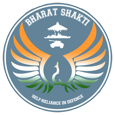





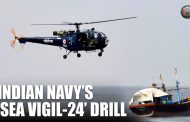
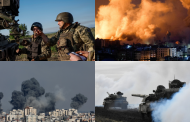
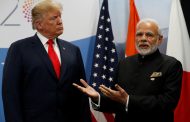
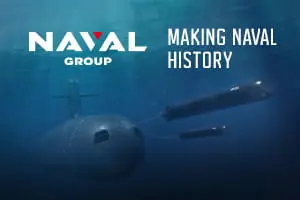
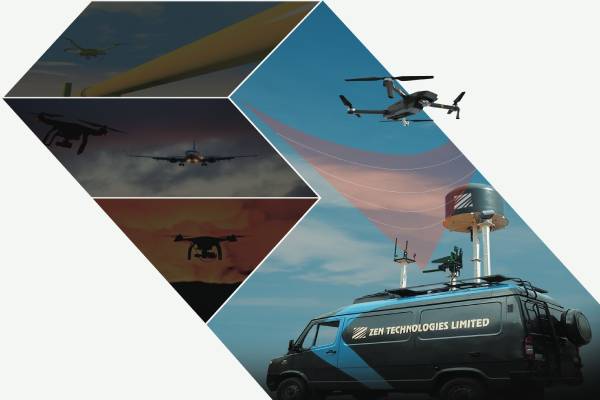



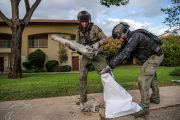

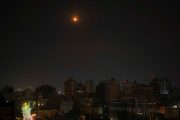

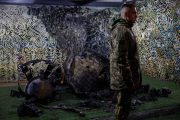

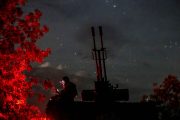

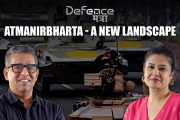

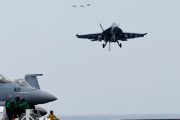

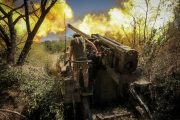

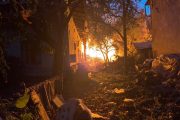

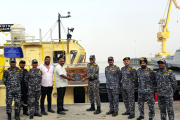



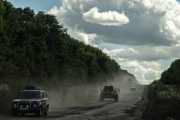

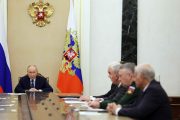



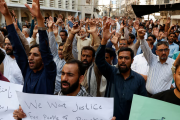
6 Comments
Cmde HA Gokhale, Veteran IN
This article is too structured to suit the IAF point of view. Author may remember not so pleasant disagreement beteeen IN and IAF over Maritime Rec aircraft. Comparing US with India is comparing Jamuns with apples. We tom-tom the fact that we shall attack no one ever and therfor our posture is totally defensive. USA is not. They claim that they can hit any part of the world within hours through their resources, especially through Carrier aircraft. Even during Kargill, we scruplously avoided crossing the IB, Balakot being the sole exception which we may not have to repeat. With such a mindset ,isn’t IAF willy-nilly a supporting arm of the Army which has to ensure that no land is lost to enemy? We will capture some enemy land for post Cease-fire neotiations which we alwyas give back. The un-answered question is who shall be incharge of interdiction ops in enemy territory which which IAF shall do as ‘offensive defense’. Speaking about Status, it looks as if Drone warfare is the sunrise warfare which can come totally under IAF.
Rajiv Lakhwara
It is quite evident that unfortunately for the services particularly and nation in general the quality of professionalism and knowledge of the CDS is going to cause lots of heartburns and mutual distrust. The General is quite determined to bring a feeling of mistrust rather than uniting the three services who all individually are by far one of the best in the world. Stark example how an inept commander can really spoil an otherwise very wise move or idea.
Shashikant Oak
“over the years we have developed airpower blindness which will only aggravate the process that has been adopted for theaterisation.”
Well said Sir…
Dinesh Vaswani
Air Mshl SSoman is an extremely knowledgeable officer who has headed two theaters in the IAF. I completely agree with him that the IAF can’t be placed as a helping arm to the army. The IAF definitely is one of the best and amongst the several roles it undertakes only one part of it is providing air support for the army. Which too has been mainly taken over by Army Aviation Corps. Hence, claims of IAF being only a support element to the army is rather naive.
The Integrated Air Defense Command maybe a great concept but it’s rather obvious that Air Defense requires thorough knowledge of the air elements and tactics. This is definitely an open and shut case without even blinking an eye.
The IAF has been contemplating of jointness or jointmanship of the three services since ages, however with genuine integration rather than only a paper exercise.
Gp Capt Johnson Chacko
Thete needs to be a doctrinal base which elucidates as to how defence of India is to be managed. Integration is the key, not theaterisation leading to disintegration.
We need to enact a law to reorganise the Armed Forces. At present CDS is an appointment without legal sanction. If theater commanders are to report to him then there has to a law for him to exercise command over them. No officer can exercise judicial powers over a junior from another service. A command in which judicial powers cannot be exercised is not a command.
Laljee Verma
CDS was a ludicrous idea. How can you have someone heading a theatre command without having all the resources under control? Is the effort to create another Chief? History is replete with examples where Army Air Forces have performed badly and separate Air Forces have done much better. The US learnt the lessons early and converted their Army Air Force to a separate strategic Air Force in the initial phase of World War II. Theatre commands work well when you have large resources, which India does not have. Take the Air Force for example. The Air Force is deficient of more than a dozen squadrons. Can they fragment their resources further to theatre commands and still retain their strategic role which is the paramount responsibility of the air force? As I mentioned earlier it is a dangerous idea to have Integrated Theatre Commands in the present scenario, the CDS is hell-bent upon pushing it through. It will be a dangerous move. If they do a mock paper exercise in the form of an ‘Appreciation’ it will be clear that Integrated Theatre Commands will not work. Even with the armoured assets, it will be clear that one theatre command may be fighting with all integrated resources whereas another theatre command may have resources sitting idle. And, if required to be moved from the East to the West it may be a time-consuming exercise, apart from leaving a theatre unguarded. It has been stated that these theatre commands would report to the CDS. Will, they bypass the service chiefs? The CDS does not have absolute control over men and material but wants to become another Chief without due responsibility. Security of the country may still be the prime responsibility of the respective chiefs. The idea of having theatre commands and fragment the resources, especially of the air force may cost the country dearly in the future.
Laljee Verma, Rtd Air Mshl, a thinker and an author.